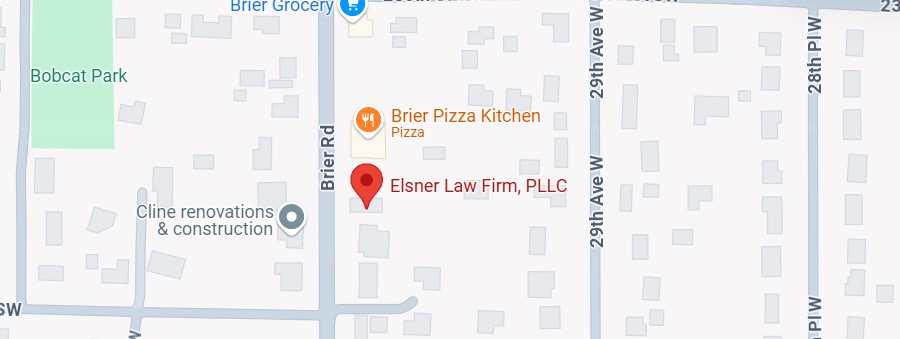Back-to-School Car Maintenance Tips: Preparing Your Ride for the School Year
As we wave goodbye to the lazy days of summer and gear up for the bustling back-to-school season, it’s essential to remember that not only do our kids need to be prepped for the year ahead, but our vehicles do too. College students, in particular, should make sure their cars are ready for campus life and the demands of the school year.
Just as students must be ready to tackle the challenges of a new school year, their car’s essential systems require a little TLC to ensure it’s up for the daily commutes to school, work, and beyond. Preparing cars for back to school means checking all the basics for safety and reliability.
Think of this like good footwear for a long walk on campus—a necessity for safety and comfort.
- Tread Depth: Just like the tread on new school shoes, your tires need sufficient depth for safe traction. A quick penny test can help you check this easily.
- Tire Pressure: Properly inflated tires mean a smoother, more efficient ride—like well-fitted sneakers.
- Rotation and Alignment: Regular adjustments can prevent uneven wear on your tires, much like periodic studying helps your kids stay on track academically.
- Brake Inspection: Ensure You Can Always Stop Smoothly
Reliable brakes are critical—they’re the dependable hall monitor of your vehicle.
- Brake Pads** and Rotors**: If you hear squeaking or grinding, consider it a clear signal—like a child’s complaint about a heavy backpack—that it’s time to replace these components.
- Brake Fluid: Essential for the hydraulic system to function, like water during a strenuous PE class. If it’s murky, a change might be due.
- Battery Check: Keeping the Energy Up
Just like your kid’s energy levels need to be replenished after a long school day; the car’s battery needs regular check-ups.
- Battery Terminals: Keep them clean from corrosion—think of it like keeping that locker tidy!
- Battery Life: Remember, if your car’s battery is older than three years, it might be time for a new one to avoid mid-term breakdowns.
- Fluid Levels: The Lifeblood of Your Vehicle
Keeping fluids topped up is akin to keeping your scholar hydrated—both are necessary for optimal performance.
- Engine Oil: The engine’s best defense against wear, akin to brain food that keeps thoughts clear and actions smooth.
- Coolant: This prevents overheating, just like a refreshing drink on a hot recess day.
- Transmission Fluid and Windshield Washer Fluid: Ensure these are at appropriate levels for smooth driving and clear visibility.
- Light Check: Illuminating Your Journey
Effective lighting is crucial—it’s the highlighter that helps students focus on important text in their studies.
- Headlights and Brake Lights: Check that all are functioning correctly to communicate effectively with other drivers.
- HVAC System: Comfort for All Seasons
Your car’s heating and cooling systems should respond well no matter the weather, much like dressing appropriately for a school day.
- AC and Heater: Make sure these are prepped to provide comfort when the season changes.
- Wiper Blades: Keeping Your Outlook Clear
Good visibility is as important as clear handwriting in a notebook. If your wipers leave streaks, they might need replacing.
- Visual Inspection: A Quick ‘Before-School’ Check
Take a walk around your vehicle for any signs of leaks, damage to the bodywork, or worn belts and hoses. It’s similar to a last-minute backpack check for homework!
- Professional Inspection: When It’s Time for Expert Advice
Think of this like a parent-teacher conference—sometimes, consulting a professional is the best way to ensure all is well.
- Emergency Kit: Always Be Prepared
Include items such as jumper cables, a tire pressure gauge, basic tools, and first aid supplies. Consider this the school bag essentials for your car.
Final Thoughts
Embracing the start of a new academic year with a well-maintained vehicle can make all the difference in everyday logistics. These practical tips will ensure that your car remains a reliable and safe companion throughout the school year. Here’s to a successful and smooth year ahead—both on the road and in the classroom! If you or someone you know has been injured by a car accident, please reach out today for your free consultation 206-447-1425.
Introduction: Why Back-to-School Car Care Matters
As the summer winds down and the back-to-school season approaches, it’s time to shift gears from vacation mode to the busy months ahead. Whether you’re a parent shuttling kids to school and after school activities, or a college student preparing for campus life, your car is about to become your daily companion. Prioritizing back to school car maintenance isn’t just about avoiding costly repairs—it’s about ensuring your vehicle is ready for the demands of the school year. A well-maintained school car means fewer unexpected breakdowns, better fuel efficiency, and peace of mind for every trip, from morning drop-offs to late-night study sessions. By giving your car the attention it deserves now, you’ll set yourself up for a smooth, safe, and stress-free back to school experience.
Essential Pre-Season Checks
Before the school year kicks off, take a few moments to give your vehicle a thorough check-up. Start with your tires: use a tire pressure gauge to ensure each tire is inflated to the recommended level, and inspect tread depth with the penny test—if you can see the top of Lincoln’s head, it’s time for new tires. Next, check your brake pads, brake lights, and brake fluid levels to make sure your braking system is in top shape for safe stops. Don’t overlook essential fluids: top off your engine oil, transmission fluid, and windshield washer fluid to keep your engine running smoothly and your windshield clear. Finally, inspect belts, hoses, and the air conditioning system to help prevent unexpected breakdowns and costly repairs. These simple steps will keep your vehicle road trip ready and reliable all school year long.
Safety Checks for Student Drivers
For student drivers and their families, safety is the top priority. Begin with a thorough brake inspection—worn brake pads can reduce stopping power and increase the risk of accidents. Make sure all lights are working properly, including low beams, high beams, brake lights, and interior lights, to ensure clear vision and visibility at all times. Don’t forget to check your vehicle’s electrical systems, such as the battery, alternator, and starter, to avoid unexpected breakdowns. It’s also wise to assemble an emergency kit stocked with basic tools, jumper cables, a first aid kit, and a list of emergency contacts. These precautions will help keep student drivers safe and prepared for whatever the school year brings.
Electrical Systems Evaluation
A reliable vehicle starts with a healthy electrical system. Begin by inspecting your battery terminals for any signs of corrosion or loose connections—clean terminals help ensure a strong start every time. Check your vehicle’s wiring and circuits for wear or damage, and test all lights, including headlights, brake lights, and turn signals, to confirm they’re working properly. Don’t forget your wiper blades; if they’re streaking or skipping, replace them to maintain clear vision during rainy commutes. By staying on top of your car’s electrical systems, you’ll reduce the risk of unexpected breakdowns and avoid costly repairs, keeping your family safe on the road.
Cooling System and Air Conditioning Maintenance
As temperatures fluctuate during the back to school season, your vehicle’s cooling system and air conditioning become essential for comfort and safety. Check your coolant levels and inspect the condition of the fluid—top off or replace as needed to prevent overheating and engine damage. Examine your air conditioning system, including the compressor, condenser, and evaporator, to ensure it’s cooling effectively, especially on a hot day. Refer to your owner’s manual for recommended maintenance intervals and specific guidelines for your vehicle. By keeping your cooling system and air conditioning in good shape, you’ll enjoy a comfortable ride and safe driving conditions, no matter what the weather brings.
Battery Check: Ensuring Reliable Starts
Nothing derails a busy school morning like a car that won’t start. To avoid this headache, check your battery’s age and condition—if it’s older than three years or showing signs of weakness, consider replacing it before the back to school rush. Inspect your battery terminals for corrosion and make sure all connections are tight and clean. Test your vehicle’s electrical systems, including the alternator and starter, to ensure everything is working properly. Keep a set of jumper cables and an emergency kit in your car for added peace of mind. By making battery maintenance a priority, you’ll help prevent unexpected breakdowns and keep your school year running smoothly.





